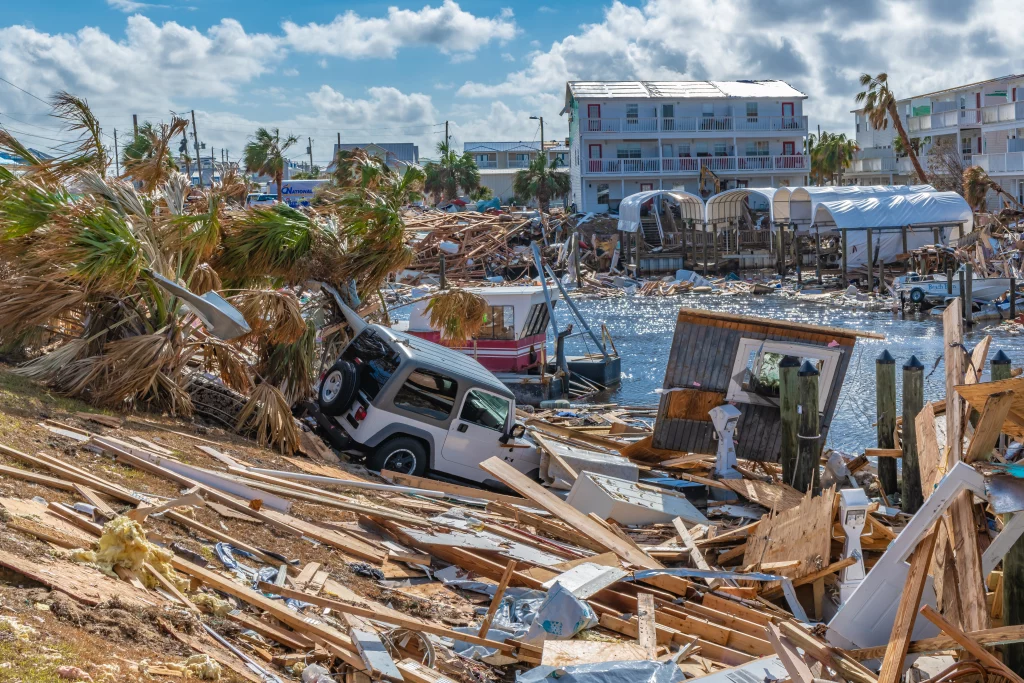Hurricanes have always posed an imminent threat to Florida. But the risk hasn't stopped the crowds that have flocked to the state since the start of the pandemic. From Tampa to Naples, the state's Gulf Coast has become a national real estate hub with its alluring beaches and relative accessibility compared to larger cities. According to federal data, of the 10 fastest-growing housing markets this year, half are on the west coast of Florida, and Fort Myers ranks first.

William Vellema has been living under the bridge for four days, waiting to get to Fort Myers Beach on Estero Island in Florida to see if his country house survived Hurricane Jan. On Friday, he was very upset, as he continued to wait for permission to come back and see the damage.
He have no opportunity to move because of rescue and recovery efforts. He came from Little Falls, New Jersey, with a pass that he received at the beginning of the hurricane season and which was supposed to allow him to get to the island after the storm.
Vellema was thinking about going kayaking at night. He keeps in touch with friends in other parts of the country who are waiting for him to go south. Their expectation is a reminder that the death toll, which already stands at 103 people, may still rise.
The mayor of Fort Myers Beach, Ray Murphy, said that no one will be allowed back until emergency services crews finish searching for people who have been injured or may need help among the wreckage, and people who have passed in the city with a population of just over 7,000 people. The statement says that rapid response services need space and time to do their job, and any additional movement of vehicles and pedestrians complicates and prolongs their efforts. Officials have not set a date when residents will be able to return.
The Florida Board of Medical Examiners reported 94 deaths related to the storm in Florida. Most of them were in the hardest-hit Lee County, which includes the greater Fort Myers area and nearby Gulf Coast islands. At least half of the confirmed victims in the state were aged 65 or older, and more than two–thirds were aged 50 or older. Five people were also killed in North Carolina, three in Cuba and one in Virginia.
Jan is the third-largest hurricane to hit the mainland United States in the 21st century, after Hurricane Katrina, which killed about 1,400 people, and Hurricane Sandy, which killed 233 people, despite the fact that it weakened to a tropical storm shortly before making landfall in the United States. The deadliest hurricane ever to hit the United States was the Great Galveston Hurricane in 1900, which claimed the lives of 8,000 people.
The crew prepares two less damaged shrimp boats to return to the water after most of the Erickson & Jensen Seafood fleet was severely damaged by Hurricane Ian on San Carlos Island in Fort Myers Beach, Florida, on October 7, 2022. .
Jan, a category 4 storm with sustained winds of 240 km/h, caused torrents of rain and caused extensive flooding and damage. The flood turned the streets into stormy rivers. Waterways in the backyard extended beyond the blocks, sometimes by more than 3.5 meters, throwing boats into yards and roadways. Beaches disappeared as ocean waves pushed the coastline far inland. Officials estimate that the hurricane caused billions of dollars in damage to real estate in Florida.
Rising inflation and higher mortgage rates have made buying property less profitable for investors and less affordable for ordinary people. According to a Florida Atlantic University study, Fort Myers and Tampa ranked 3rd and 9th among the most overvalued housing markets, respectively, where homes sold 62% and 58% above their historical trends. While housing demand may drop immediately after the hurricane, FAU researchers said that the destruction of Jan will delay construction and could further increase rents in the landfall areas over the years.